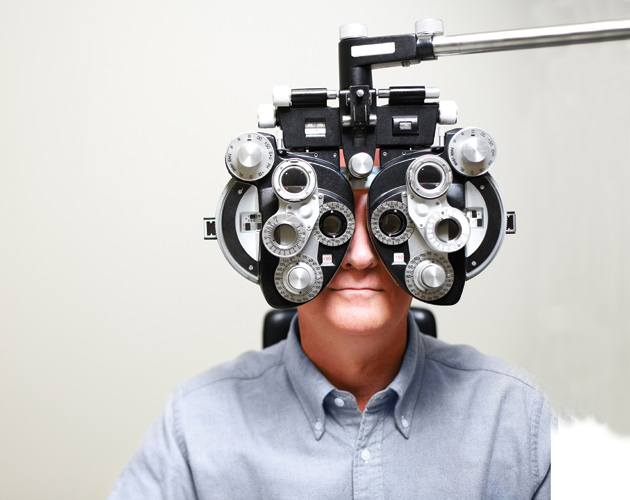Better Eye Health: A New Focal Point

IT’S LIKELY that many of you reading this article are doing so with the help of glasses or contact lenses. Future generations though, may have vision problems – even blindness – reversed not through corrective lenses but by brain stimulation.
A recent University of Pennsylvania breakthrough could one day make eyewear a thing of the past. Researchers have successfully created a map to understand how vision is organized on the surface of our brain. The hope is that this “retinotopic” map will lead to development of devices that restore vision by connecting directly to the visual cortex, making glasses obsolete.
Until that happens, opticians remind us to get our eyes tested once every two years, annually for those over 65. By the time we’re 40, more than one-third of us have some form of eye disease, which can be diagnosed through a routine eye examination. (For at-home monitoring of diseases such as wet age-related macular degeneration, download the Canadian National Institute for the Blind’s Amsler Grid at cnib.ca.)
My own eye test was long overdue: I was having trouble reading the printed word and emails. Presbyopia had hit. The lenses in my eyes had begun to lose flexibility, which affected my ability to read print. It’s a common curse of middle-aged eyes and trying to cope by squinting gets old quickly.
So I met with Amin Mamdani, vice-president of Josephson Opticians, to discuss my situation. First step: get my eyes tested at a facility that uses the latest diagnostic equipment. A conventional eye test, he explained, measures two basic eye aberrations, whereas a comprehensive exam (I had mine at Downtown Eye Associates, Toronto) does cost more but yields more information on possible complications with your eyes. Plus it provides computer-precise eye measurements by which Mamdani says opticians are able to customize an incredibly accurate lens to correct one’s specific vision.
He asked me about my job and lifestyle, then recommended either progressive lenses, which correct for distance, intermediate and up-close vision, or an intermediate lens, which sacrifices distance but vividly sharpens the medium field of vision, from up close to a few metres away.
We decided the intermediate lens suited my needs: a lot of time reading and working at a computer, not much time driving. I was fitted with a pair of stylish Robert Marc frames, containing Nikon’s new Home and Office intermediate lens. The frames drew rave reviews, and the new lenses opened my eyes to a vividly enhanced high-def world. I can now read print in books or on the computer screen or watch TV from across the room without bobbing my head to find the right focal point. Yes, I had to give up some long-range vision but in cases of need, I just pop on my distance specs. No more squinting.
Nikon Home and Office Lenses, available exclusively at Josephson Opticians,
60 Bloor St. W., 416-964-7070; and five other Toronto locations; josephson.ca.